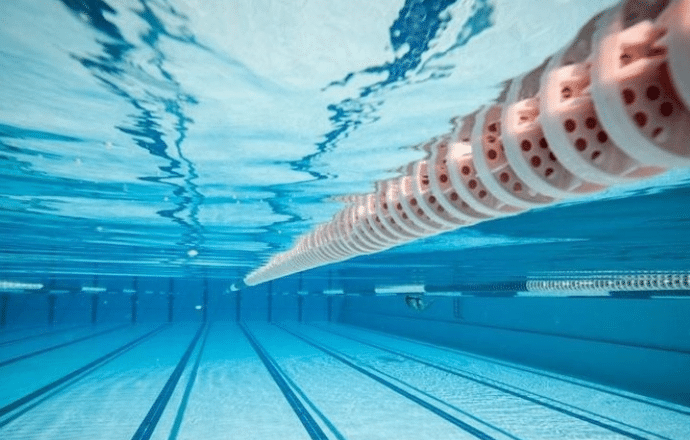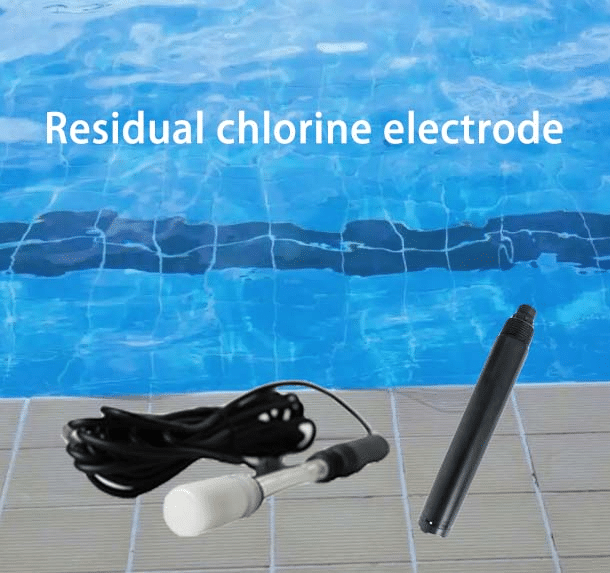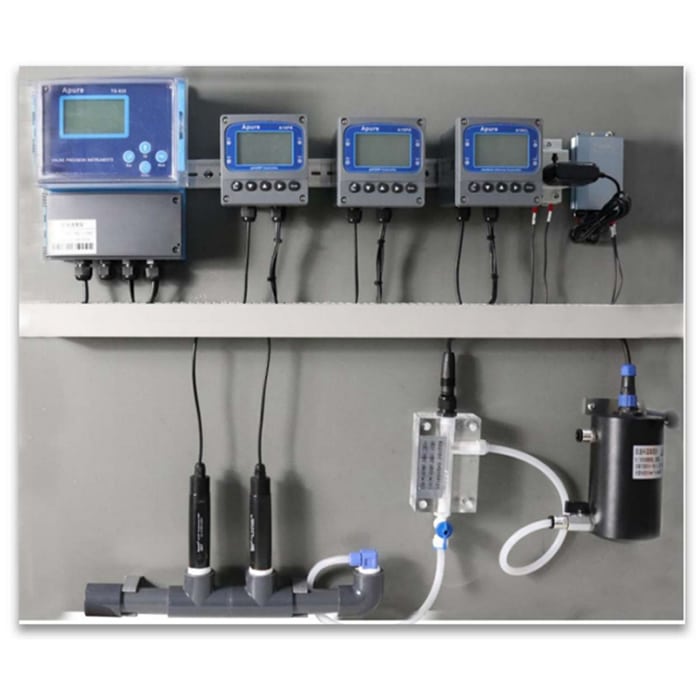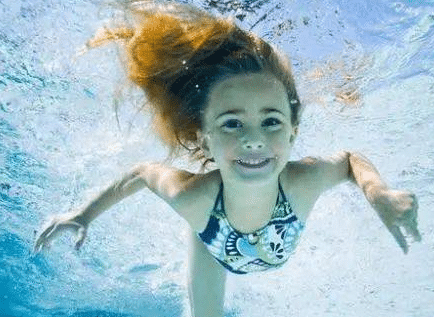Pool water is often contaminated by such things as human pollution, environmental factors, and the entry of other organisms such as birds and insects, all of which can cause the pool water to become susceptible to algae, bacteria and other harmful microorganisms, and eventually the pool water can become cloudy, unclean and smelly.

Why is pool water testing important?
Swimming pools are exposed to a large number of users and complex environmental factors on a daily basis, and the water is susceptible to sweat, urine, cosmetics, bacteria and external contamination.
If not detected and treated in a timely manner, it can lead to the following problems:
- User skin sensitization, red eyes, and respiratory irritation;
- Breeding of pathogens (e.g. E. coli, Legionella) leading to cross-infection;
- Turbid and smelly water, affecting the experience;
- Scaling and corrosion of equipment, increasing maintenance costs.
How to clean the pool water?
Chemical treatment method
Pool water is often chemically treated to keep it clean and safe to swim in. The most common chemicals used to treat pool water are chlorine, bromine and ozone.
- Chlorine is the most common chemical used to treat pool water. It is a powerful disinfectant that kills bacteria and algae. Chlorine can be added to pool water in the form of tablets, granules, or liquid.
- Bromine is a less common chemical used to treat pool water. It is similar to chlorine in that it is a powerful disinfectant. However, bromine is not as effective as chlorine at killing algae. Bromine can be added to pool water in the form of tablets, granules, or liquid.
- Ozone is a powerful oxidizing agent that can be used to treat pool water. Ozone is not as common as chlorine or bromine, but it is becoming more popular because it is a more environmentally friendly option. Ozone can be added to pool water in the form of a generator.

Physical treatment method
In addition to chemicals, pool water can also be treated with physical methods, such as filtration and UV treatment. Filtration removes dirt, debris, and bacteria from pool water. UV treatment uses ultraviolet light to kill bacteria and algae.
Shock pool once a month. Shocking the pool will help to kill any bacteria or algae that may be growing in the water.

Monitoring pool water
The following parameters and ranges of pool water need to be monitored:
| Parameter | Range |
| pH | 7.2 – 7.8 |
| Chlorine | 1 – 4 ppm |
| Bromine | 2 – 4 ppm |
| Alkalinity | 80 – 120 ppm |
| Hardness | 150 – 200 ppm |
| Total Dissolved Solids | < 1,500 ppm |
| Total Organic Carbon | < 5 ppm |
| Sulfuric Acid | As needed with professional guidance |
| Total Chlorine | 1 – 4 ppm |
| Free Chlorine | 1 – 2 ppm |
| Combined Chlorine | < 0.5 ppm |
| Total Alkalinity | 80 – 120 ppm |
| Hardness | 150 – 200 ppm |
| Cyanuric Acid | 30 – 50 ppm |
| E. coli | 0 CFU (colony-forming units) per 100mL of water |
| Total Coliforms | 0 CFU per 100mL of water |
Why monitor
Total Chlorine is the total amount of chlorine in the pool water, both free and combined. Free chlorine is the most effective at killing bacteria and algae, while combined chlorine is less effective, but it can last longer in the water. Free chlorine is created when chlorine gas is added to water. The chlorine gas reacts with the water to form hypochlorous acid and
hypochlorite ions. Hypochlorous acid is the most effective form of chlorine at killing bacteria and algae (The Blue-Green Algae Sensor can usually be used to monitor). Hypochlorite ions are also effective, but they are not as effective as hypochlorous acid. Combined Chlorine is created when chlorine reacts with organic matter in the water. This can happen from sweat, urine, or other bodily fluids from swimmers. It can also happen from leaves, dirt, or other debris that falls into the pool.


The best way to maintain the correct level of total chlorine in a pool is to use the Apure’s chlorine meter or sensor. They measure the levels of residual chlorine, combined chlorine, and total chlorine in the pool water.
Measuring the pH is also important, as a pH that is too high or too low can make water uncomfortable to swim in and can damage pool equipment. Alkalinity helps buffer the pH of your water, preventing it from fluctuating too much, as does total alkalinity. Apure’s TC-2200 Digital pH and Chlorine Tester can monitor these three parameters and at the same time, it can also measure Chlorine.
There are also Total Dissolved Solids (TDS), which is the amount of dissolved minerals and other substances in water. Total Organic Carbon (TOC) is the amount of organic matter in water. Sulfuric acid is used to lower the pH of the water. It should only be used when necessary and under the direction of a pool professional.
These parameters can be monitored with Apure’s water quality tester. To measure pH and alkalinity, the A10 Aquarium ORP pH Controller is a good choice. To measure TDS, the A30 Digital TDS EC Meter is also a good choice. If you have any need, please feel free to contact us.

Intelligent Water Quality Monitoring
More and more modern swimming pools introduce automatic dosing system + online water quality monitoring equipment, which can realize:

- Real-time monitoring of residual chlorine, pH, ORP
- Abnormal automatic alarm;
- Linkage with dosing pump to realize accurate dosing
Expand
Alkalinity and Total Alkalinity are two different chemical concepts.
Alkalinity refers to the ability of alkaline substances in water to neutralize acidic substances to a certain extent, that is, the buffering capacity of water to maintain a relatively stable pH.
Total alkalinity refers to the sum of the concentrations of all alkaline substances in water, including carbonates, phosphates, and hydroxides. If the total alkalinity is too high, it will cause the water to become cloudy and may also lead to scale formation, which can negatively affect the water quality.

Selection of different pool water
The type of pool water that you choose will depend on your personal preferences and needs.
- Chlorinated pool water: Chlorinated pool water is the most common type of pool water.
Chlorine is a strong disinfectant that kills bacteria and algae. Chlorinated pool water is typically clear and odorless. Therefore, the appropriate range for chlorine is 1-4ppm.
Chlorine can be irritating to the skin and eyes of some people. It can also be harmful to pets.
If you have sensitive skin or pets, you may want to consider a different type of pool water. - Saltwater pool water: Saltwater pools use a salt chlorinator to generate chlorine. This type
of pool water is often considered to be more gentle on the skin than chlorinated pool water.
Saltwater pools can be more expensive to install and maintain than chlorinated pool.
However, they may be a good option for people with sensitive skin. - Mineral pool water: Mineral pools use minerals, such as magnesium and calcium, to
disinfect the water. This type of pool water is often considered to be more gentle on the skin than chlorinated or saltwater pool water.
Mineral pools can be more expensive to install and maintain than chlorinated or saltwater pool. However, they may be a good option for people with sensitive skin.

Suggestions for swimwear
The best material to wear swimwear is a polyester/elastane blend. Polyester is a synthetic fiber that is durable, quick-drying, and chlorine-resistant. Polyester is chlorine-resistant, which is important for swimmers who use chlorinated pools. Elastane is a synthetic fiber that is stretchy and provides a comfortable fit. When combined, polyester and elastane create a swimwear fabric that is both durable and comfortable.

Summary
Finally, for swimming in pool water, you need to be aware of other swimmers and objects in the pool. Avoid swimming near drains or other equipment that could injure you. Also, avoid swimming if you are sick. If you are sick, it is best to avoid swimming. Swimming can spread germs and make you feel worse.
In general, it is very important to ensure the safety of swimming pool water, and Apure’s water quality analyzer can effectively help you monitor swimming pool water, so that you can feel more at ease. If you have questions, please feel free to contact us.

Extended reading:
Symptoms Of Low pH In Fish Tank
What Is pH Probe and How It Works?
3 Main Water Quality Parameters Types
Surface Water vs Groundwater
